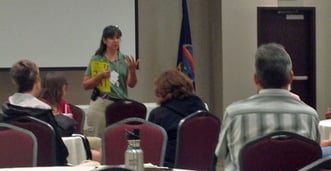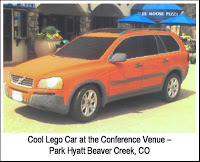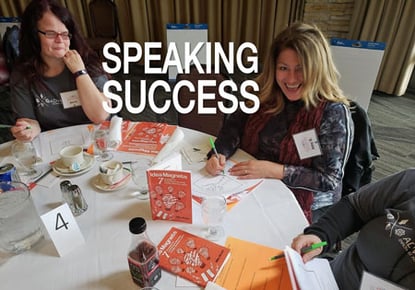Here are two recent examples of opportunities for more effective audience-driven branding, if one is paying attention and thinking from the audience’s perspective.
A New Audience Member Doesn’t See Your Ho-Hum
 At the Kansas Green Schools and Environmental Education Conference, I attended a discussion group on “Thinking Outside the Box about Community Partners & Resources,” facilitated by Schanee’ Anderson of the Sedgwick County Zoo. Schanee’ covered the importance of not presupposing what your audience will find intriguing about your brand experience based solely on what YOU find intriguing.
At the Kansas Green Schools and Environmental Education Conference, I attended a discussion group on “Thinking Outside the Box about Community Partners & Resources,” facilitated by Schanee’ Anderson of the Sedgwick County Zoo. Schanee’ covered the importance of not presupposing what your audience will find intriguing about your brand experience based solely on what YOU find intriguing.
Just one of her great insights on audience-driven branding was to take people unfamiliar with your organization on a tour of your operation. When an unfamiliar audience member “oohs” and “ahhs,” take note: that is an audience-driven branding element that is special. It is something to feature, no matter how long ago you started taking it for granted.
Other audience-driven branding insights Schanee’ shared included:
- Not just asking the usual suspects to participate in your non-profit’s activities. Look for people with no apparent ties to your cause who might have intense interests in your cause that are not readily apparent.
- Continually provide your audience members with the inside scoop on your organization. This builds relationships through giving them he inside scoop even when you do not have a specific ask to make of them.
- If the people in your organization need training, identify an organization whose people would grow by educating your organization on relevant topics.
Question: What kinds of opportunities could a more audience-driven look at your brand experience create for your organization?
Not Jumping the Gun on the Ask
I was talking with a fund raising executive about his organization’s newsletter. The top section of the newsletter, filled with links to news about the organization, its people, and their activities drives significant website traffic whenever they distribute the email. The newsletter section immediately following the newsy/personal links is a very direct ask about finding out more about wills, trusts, and estate planning. Not surprisingly, the number of clicks on the features in the estate and wills section is much lower.
We discussed the awkward shift between news and estate planning that makes it seem as if the organization is jumping the gun on its ask. As an alternative, we discussed developing a persona to represent his target audience: people in their 40s and 50s who are creating wills who rarely change their wills and trusts after they are completed.
Since his audience is connected to its youthful days as part of the organization, I suggested instead of featuring articles on estate planning, his more in-depth section should recap memories of his organization when his target audience was directly involved. These stories of yesteryear would actually engage the target audience. The associated links for these stories would focus on familiar people to the target audience who have actually engaged in planned giving. So now instead of jumping the gun to the ask, the organization uses two sets of stories of personal interest to the target audience to create engagement.
Question: How would more audience-driven stories open up possibilities to engage audience members wary of a direct ask? - Mike Brown
If you enjoyed this article, subscribe to the free Brainzooming blog email updates.
The Brainzooming Group helps make smart organizations more successful by rapidly expanding their strategic options and creating innovative plans they can efficiently implement. Email us at info@brainzooming.com or call us at 816-509-5320 to learn how we can help you enhance your strategy and implementation efforts.




